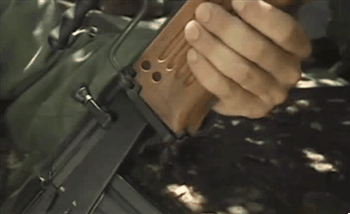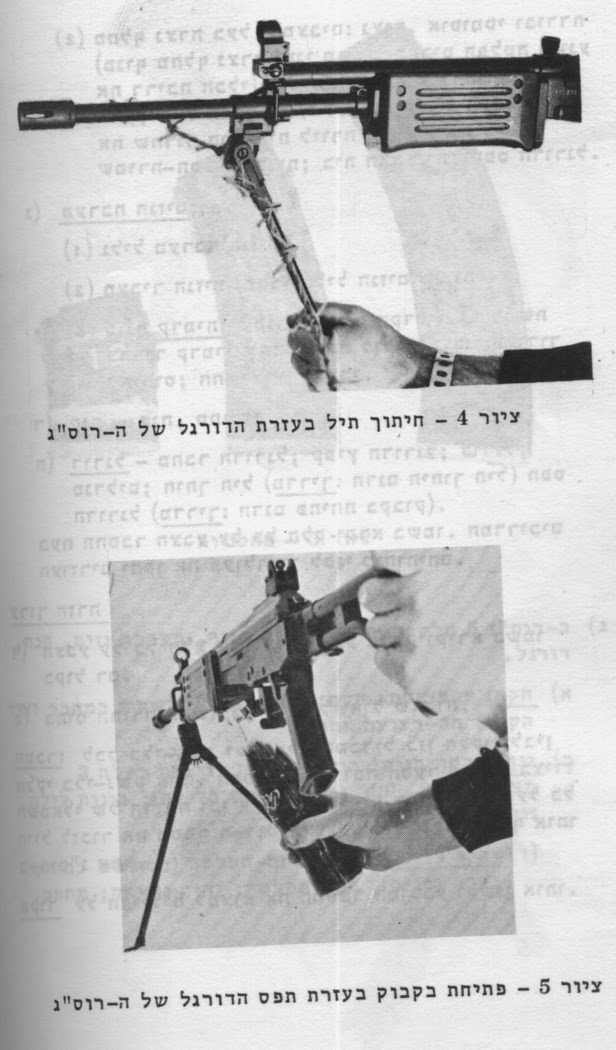In 1967, Israel fought the Six-Day War. Also known as the June War, the Israeli Defense Force was armed with the FN FAL battle rifle against the AK-47s of the Arab coalition. In the desert sand and dust, the Israeli FALs were prone to jamming and malfunctions. Moreover, the rifle was considered long and heavy. Israel needed a new rifle.
In the 1960s, America was replacing France as Israel’s primary ally and weapons supplier. The Israelis were offered the M16A1 to replace the FAL. While the new rifle was lighter and accurate, early M-16s (and the accompanying ammunition) were not reliable enough for the IDF.
During the Six-Day War, Israel captured thousands of AKs. The IDF found that the stories of the rifle’s legendary reliability were true, but found its accuracy lacking. What they needed was a weapon that combined the accuracy of the M-16 with the reliability of the AK-47.

Uziel Gal, designer and namesake of the iconic Uzi submachine gun, submitted a design for the new rifle. However, it was determined to be too complex and unreliable. Yisrael Galil, a British Army veteran of WWII, entered a competing design.
Galil’s rifle was based on the Finnish Valmet Rk 62. The Valmet uses the same 7.62x39mm cartridge as the AK-47 and is based on the Polish licensed version of the AK. However, Galil modified the Valmet to fire the 5.56x45mm NATO cartridge from the M16. Not only was the smaller American round more accurate, but it was readily available to Israel from the United States. The rifle, named Galil after its designer, was declared the winner and Israel’s new primary rifle.

Designed for the specific needs of Israeli soldiers, the standard service rifle version issued to infantry units had some special features. Designated as the Automatic Rifle Machine-gun variant, the Galil ARM was fitted with a bipod. This allowed troops to fire the weapon from a more steady position in the prone. The bipod hinge also functioned as a wire cutter. This reduced the time needed for IDF troops to cut through the wire fences common in rural Israel. Finally, the bipod latch could be used as a bottle opener. Civilian reservists often used the magazine feed lips of the Uzi to open bottles which resulted in damaged magazines. The Galil came with a bottle opener built right in to prevent this.
However, in 1973, Israel was caught off guard with the Yom Kippur War. The Arab coalition launched coordinated surprise attacks on the Jewish holiday and the IDF was forced to rapidly mobilize. This war delayed the production and issuance of the Galil. Additionally, most Israeli conscripts preferred the lighter, but less reliable, M16.

By 1975, 60,000 M16A1s from the United States were issued to the IDF. Compared with the high cost of domestically producing the Galil, the M16 was simply a better option to arm the majority of the IDF. The introduction of the even lighter, more versatile, and more reliable M4 and new 5.56x45mm NATO ammo sealed the Galil’s fate and it was phased out of standard-issue by 2000.
Although its use by the IDF was limited, the Galil saw extensive service overseas. Many third world countries adopted the Galil in 5.56x45mm NATO or 7.62x51mm NATO for its rugged reliability and use of NATO ammo. Licensed as the Vektor R4, the Galil is a favorite of the South African military and police. The Galil was even reportedly used by the Ventura County Sheriff’s Department SWAT Team in California. The Galil ACE is a modernized version of the rifle that comes in more calibers and configurations than its predecessor. The ACE has been adopted by the Chilean Army and People’s Army of Vietnam. However, it lacks the famous bipod with its wire cutter and bottle opener.

Feature Image: United States Marine Corps photo


